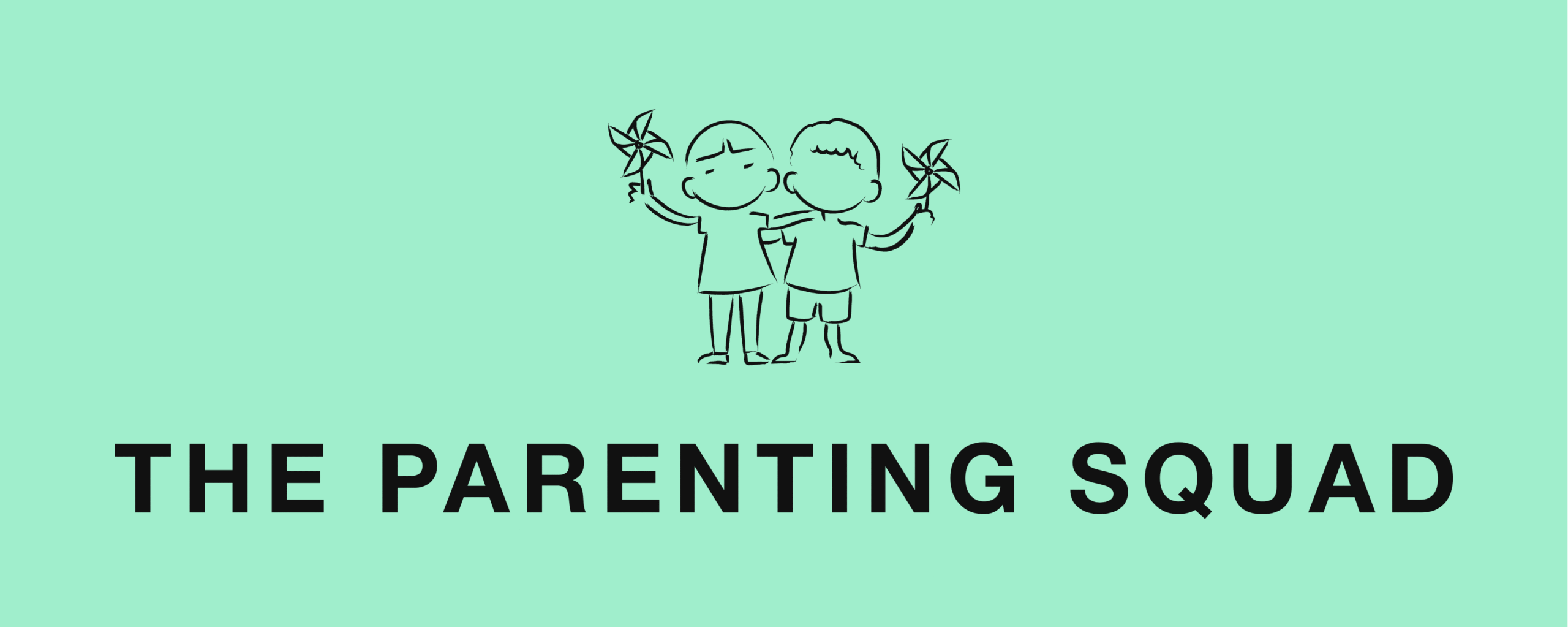Adolescence Growth: Why Teens Think Differently
If you’ve ever watched your sweet child become a door-slamming, eye-rolling, seemingly irrational teenager and wondered, “What happened to my kid?” — you’re not alone. One day, they ask for homework help; the next, they’re convinced they know everything about life while forgetting to brush their teeth.
The good news? There’s actual science behind this Jekyll-and-Hyde transformation. Adolescence growth isn’t just about getting taller or developing a sudden obsession with appearance. During this time, teens often become self-conscious about how they look and feel as though they are constantly being judged by their peers, which can impact their self-esteem and social interactions. It’s also a period of intense brain development that rewires how teens think, feel, and make decisions.
Understanding the adolescent brain can be a game-changer for parents and educators alike. When we know why teens act as they do, we can respond with empathy instead of frustration, guidance instead of judgment, and strategies that work instead of banging our heads against the wall.
Ready to decode the mystery of teenage behavior? Let’s dive into what’s happening inside that developing brain and discover practical ways to support your teen through this incredible (if occasionally maddening) growth phase.
What’s Unique About Adolescent Brain Development?
Think of the teenage brain as a house under construction. The foundation is solid, but construction is happening everywhere — especially in the most important rooms.
The prefrontal cortex, which handles executive functions like decision-making, impulse control, and planning, won’t fully develop until age 25. This means your teen’s brain is still under construction in the area responsible for thinking through consequences and making rational choices. Because the prefrontal cortex develops late, teens often struggle with impulse control, which can lead to risk-taking behaviors and mood swings.
Meanwhile, other brain parts are developing rapidly, creating new neural connections at lightning speed. Myelination of neurons during adolescence leads to faster neural processing, supporting improved cognitive functions. This is why teens can master complex video games or learn new languages with ease but struggle to remember to take out the trash or consider how their actions might impact others.
During adolescence, the brain goes through “pruning,” where unused neural connections are eliminated and frequently used ones are strengthened. It’s like renovating that house, keeping what works and getting rid of what doesn’t. This process makes the teenage brain incredibly adaptable and capable of remarkable learning, supporting cognitive development and the emergence of advanced thinking abilities such as reasoning and abstraction. But it also creates temporary imbalances that can lead to those classic teenage moments we all know and love.
Imagine your teen deciding to dye their hair purple at midnight before a family wedding or agreeing to help a friend move without checking if they have other commitments. These aren’t signs of defiance or stupidity — they’re signs of a brain still learning to balance emotion, logic, and long-term thinking.
Why Are Teens More Impulsive and Emotional?
Ever wonder why your teenager can go from laughing hysterically to sobbing dramatically in five minutes? Welcome to the wonderful world of the developing limbic system.
The amygdala, your teen’s emotional command center, works overtime during early adolescence. It’s like having a smoke detector that goes off when you’re just making toast — everything feels more intense and urgent than it is. This heightened emotional state isn’t your teen being dramatic for attention; it’s their brain processing emotions with the intensity of a fire alarm.
At the same time, the prefrontal cortex (remember that’s the “think before you act” part) is still under construction. So when your teen faces a situation that triggers strong emotions, their brain defaults to the emotional response rather than the logical one. It’s not that they’re choosing to be irrational — their brain prioritizes emotional reactions over careful consideration.
This explains those classic teenage scenarios we’ve all witnessed: the complete meltdown over a “ruined” outfit, the passionate defense of a friend who made a poor choice, or the earth-shattering importance of a text message that goes unanswered for thirty minutes.
Hormones add another layer to this emotional intensity. Growth hormone levels fluctuate during adolescence, affecting mood, energy, and emotional regulation. Think of it as trying to drive a car while someone else randomly adjusts the steering wheel’s sensitivity, gas pedal, and brakes.
The result? A teenager who feels everything deeply, reacts quickly, and often regrets it later. These changes in brain development and hormonal fluctuations can also contribute to risk-taking behaviors as teens may act on impulse and seek novel experiences. Sound familiar?
Risk-Taking Behaviors and Decision-Making in Teens
Something that might surprise you is that teenage risk-taking isn’t a bug in the system — it’s a feature. Adolescent behavior is characterized by a drive for independence and exploration, a regular part of growing up. The teenage brain is wired to seek out new experiences and take calculated risks as part of healthy development.
During adolescence, the brain’s reward system becomes hypersensitive to dopamine, the “feel-good” chemical. This means activities that provide immediate rewards feel extra satisfying to teens. It’s like turning up the volume on pleasure and excitement, which explains why teens are drawn to novel experiences, social connections, and yes, sometimes risky behaviors.
This dopamine sensitivity serves a critical developmental purpose. It motivates teens to explore beyond their family unit, develop independence, and learn through direct experience. Peer pressure can also significantly impact teens’ decision-making, increasing their likelihood of engaging in risky behavior as they seek peer acceptance and approval. Without this drive, teens might never leave home or develop the confidence to navigate the adult world.
However, this same system can lead to decisions that make parents want to hide under the covers. When choosing between a guaranteed small reward (doing homework) and a potentially exciting unknown (hanging out with friends), the teenage brain often chooses excitement over security.
The key is understanding that risky behavior is a natural part of adolescent development but should be guided and managed constructively. Teens need opportunities to take appropriate risks and make meaningful decisions within safe boundaries. This might mean letting them choose their extracurricular activities, plan a family outing, or make decisions about their appearance and personal style.
The Hidden Power of Nutrition and Sleep
How nutrition fuels the developing brain
Think of the adolescent brain as a high-performance engine—it needs the right fuel to run at its best. During adolescence, the brain builds new connections, grows rapidly, and lays the groundwork for complex thinking and learning. This is where nutrition steps in as a secret superpower.
A balanced diet with omega-3 fatty acids, vitamins, and minerals is essential for healthy brain development and cognitive growth. Adolescent females and males have different nutritional needs during this time. For example, teenage females need more iron and calcium to support pubertal development and bone strength.
All teens need enough protein and healthy fats to keep up with their rapid physical development and the emergence of secondary sexual characteristics. Skimping on nutrition can lead to developmental delays and impact everything from academic performance to mood. In short, what teens eat today shapes their bodies, brains, and futures.
How sleep affects mood, memory, and learning
If you’ve ever tried to reason with a sleep-deprived teen, you know it’s like talking to a zombie—moody, forgetful, and not exactly at their best. That’s because sleep is a cornerstone of healthy adolescent development. Experts recommend that teens get 8-10 hours of sleep each night, but busy schedules and late-night screen time often get in the way.
During those precious hours of shut-eye, the adolescent brain consolidates memories, processes emotions, and regulates mood. Adequate sleep supports the onset of puberty, helps teenage males and females manage stress, and boosts self-esteem. On the flip side, chronic sleep deprivation increases the risk of depressive symptoms, impairs cognitive function, and can even lead to poor academic performance. Prioritizing sleep isn’t just about avoiding crankiness—it’s about giving teens the mental and emotional tools they need to thrive.
Practical tips for supporting healthy habits
So how can healthcare providers, parents, and caring adults help teens build healthy habits that support their mental health and overall well-being? Here are some simple, practical strategies for promoting positive development:
- Encourage adolescents to eat a colourful variety of whole foods—fruits, veggies, whole grains, and lean proteins—to fuel brain development and physical growth.
- To help teens establish a consistent sleep schedule, set regular bedtimes, limit screen time before bed, and create a calming bedtime routine.
- Talk openly about how nutrition and sleep impact adolescent development, mental health, and even risk for substance use or risky behaviors. Knowledge is power!
- Be a role model—teens are likelier to adopt healthy habits when they see adults practicing what they preach.
- Watch for signs of poor diet or sleep deprivation such as mood swings, low energy or declining grades and offer support or seek help from healthcare providers if needed. By supporting these healthy habits, you’re not just helping teens get through adolescence—you’re setting them up for a lifetime of positive development, strong relationships, and lasting well-being.
Turning Insights into Action for Parents
Now that we know the science behind teenage behavior, how can we use this knowledge to improve our relationships with our teens?
First, remember your teenager’s brain is doing exactly what it’s supposed to be doing. When they make impulsive decisions or have emotional outbursts, it’s not a personal attack on your parenting — it’s normal adolescence growth. This period is also crucial for psychosocial development, including identity and social development, as teens explore their values and sense of self and navigate changing social relationships.
Set clear, consistent boundaries while explaining the reasoning behind them.
Since the teenage brain craves understanding and autonomy, simply saying “because I said so” often backfires. Instead, try: “I need you home by 11 PM because your brain needs adequate sleep to function well, and I worry about your safety when it’s late.”
Model the emotional regulation you want to see.
When your teen is having a meltdown, your calm response teaches them how to handle intense emotions. Take a deep breath, speak slowly, and resist the urge to match their emotional intensity.
Create opportunities for appropriate risk-taking and decision-making.
Let your teen plan a family vacation, choose their classes, or take on a challenging project. This will satisfy their brain’s need for novelty and autonomy while building confidence and decision-making skills.
Focus on connection over correction.
Before jumping into problem-solving mode, try to understand your teen’s perspective. Ask questions like “Help me understand what you were thinking” or “What felt most important to you in that moment?”
Remember, progress isn’t about eliminating all teenage behavior; it’s about helping your teen develop the skills they need while their brain finishes its remarkable construction project.
Equipping Educators to Support Teen Growth
Teachers and school staff are on the front lines of adolescence growth, witnessing firsthand how developing brains affect learning and behavior. Peer relationships are significant in the classroom, influencing learning outcomes and young people’s social development. Understanding teenage neuroscience can transform classroom management and instructional approaches. Supporting adolescent health is also crucial as it contributes to students’ overall well-being and success during this critical developmental stage.
Design lessons that engage the reward system.
Since teenage brains are dopamine-hungry, incorporate elements of novelty, choice, and collaboration into lessons. Group projects, creative assignments, and opportunities to explore personal interests can make learning rewarding rather than boring.
Recognize that emotional intensity affects learning.
A teenager who seems defiant or disengaged might be overwhelmed by emotional stress. Creating calm, supportive classroom environments helps teens regulate their emotions and learn.
Build in movement and variety.
Physical activity and environmental changes benefit the developing teenage brain. Consider incorporating brain breaks, flexible seating options, or learning opportunities outside the traditional classroom setting.
Teach cognitive development and executive functioning skills explicitly.
Since the prefrontal cortex is still developing, teens benefit from direct instruction in organization, time management, and planning. These aren’t “soft skills” but essential tools for academic success.
One high school teacher shared that she completely transformed her classroom culture by implementing “emotion check-ins” at the beginning of each class. Students could briefly indicate their emotional state, and she could adjust her teaching approach accordingly. Stressed students received extra support, while energetic students got more challenging activities. Test scores improved, but more importantly, students reported feeling understood and supported.
Bridging the Gap: Handling Conflict with Teens
Conflict with teenagers is inevitable — their developing brains are designed to push boundaries and assert independence. However, understanding the neuroscience behind a young person’s behaviour can help us navigate these conflicts more effectively.
Listen first, advise second.
When teens feel heard and understood, they’re more likely to be receptive to guidance. Try reflecting what you hear: “It sounds like you felt embarrassed when I corrected you in front of your friends.”
Validate their emotions while addressing the behavior.
You can acknowledge that your teen’s feelings are real and vital while still maintaining boundaries. “I understand you’re frustrated about the curfew, and it’s normal to want more freedom as you get older. Let’s talk about what you can do to earn that trust.”
Choose your battles wisely.
Not every teenage behaviour needs immediate correction. Ask yourself: Is this about safety? Values? Respect? Or is it about personal preference and autonomy? Save your energy for the issues that matter.
Create regular opportunities for connection.
Teens are more likely to communicate openly when they feel connected to you. This might mean one-on-one time doing activities they enjoy, family meals without phones, or regular check-ins about their lives. Remember, conflict during adolescence is normal growth. Your teenager should be developing their identity and learning to think for themselves. The goal isn’t to eliminate all conflict but to navigate it in a way that strengthens your relationship and supports their development.
Navigating This Crazy Journey
Understanding the adolescent brain doesn’t make parenting or teaching teenagers easy, but it does make it more doable. When we know that teenage behavior comes from normal brain development, not character flaws or deliberate defiance, we can respond with patience and wisdom, not frustration and punishment.
The teenage years are a fantastic time of growth and possibility. Teenagers experience increased independence and identity formation during late adolescence, and they start exploring romantic relationships as they prepare for adulthood. Yes, there will be eye-rolling, door-slamming, and moments when you question every parenting decision you’ve ever made. But there will also be incredible insights, surprising maturity, and glimpses of the amazing adult your teenager is becoming.
Adolescence is about transformation, not just physical change but the development of identity, values, and independence. Your job isn’t to control this process but to guide and support it with understanding, patience, and love.
As adolescence transitions into early adulthood, young people develop personal values, form stable relationships, and focus on future planning. Every family’s journey through adolescence is unique, but you don’t have to do it alone.
Want to learn more about how you can connect with your teen more deeply? Explore our blog and find the support you need to thrive during this crazy chapter of parenting.







